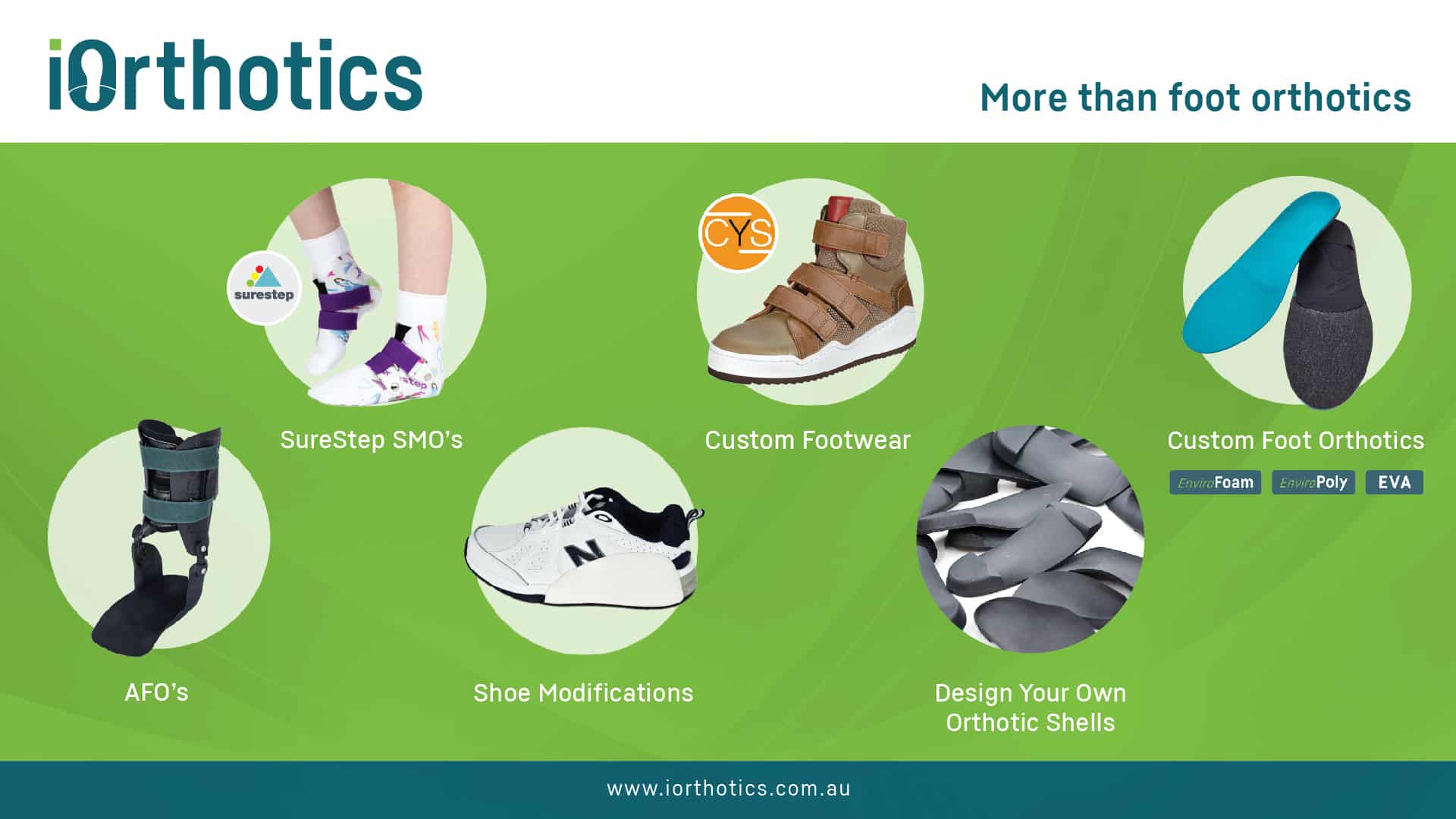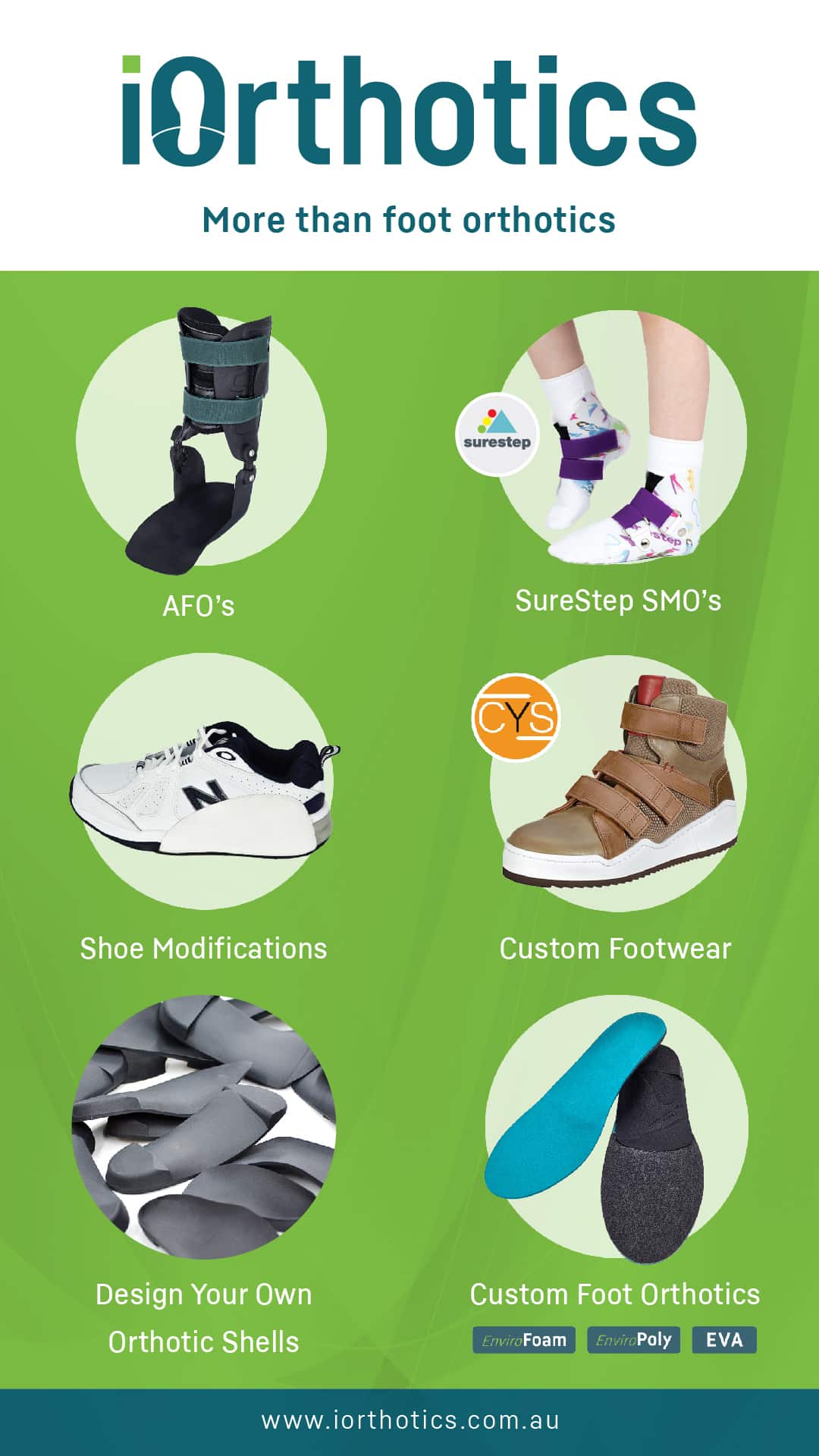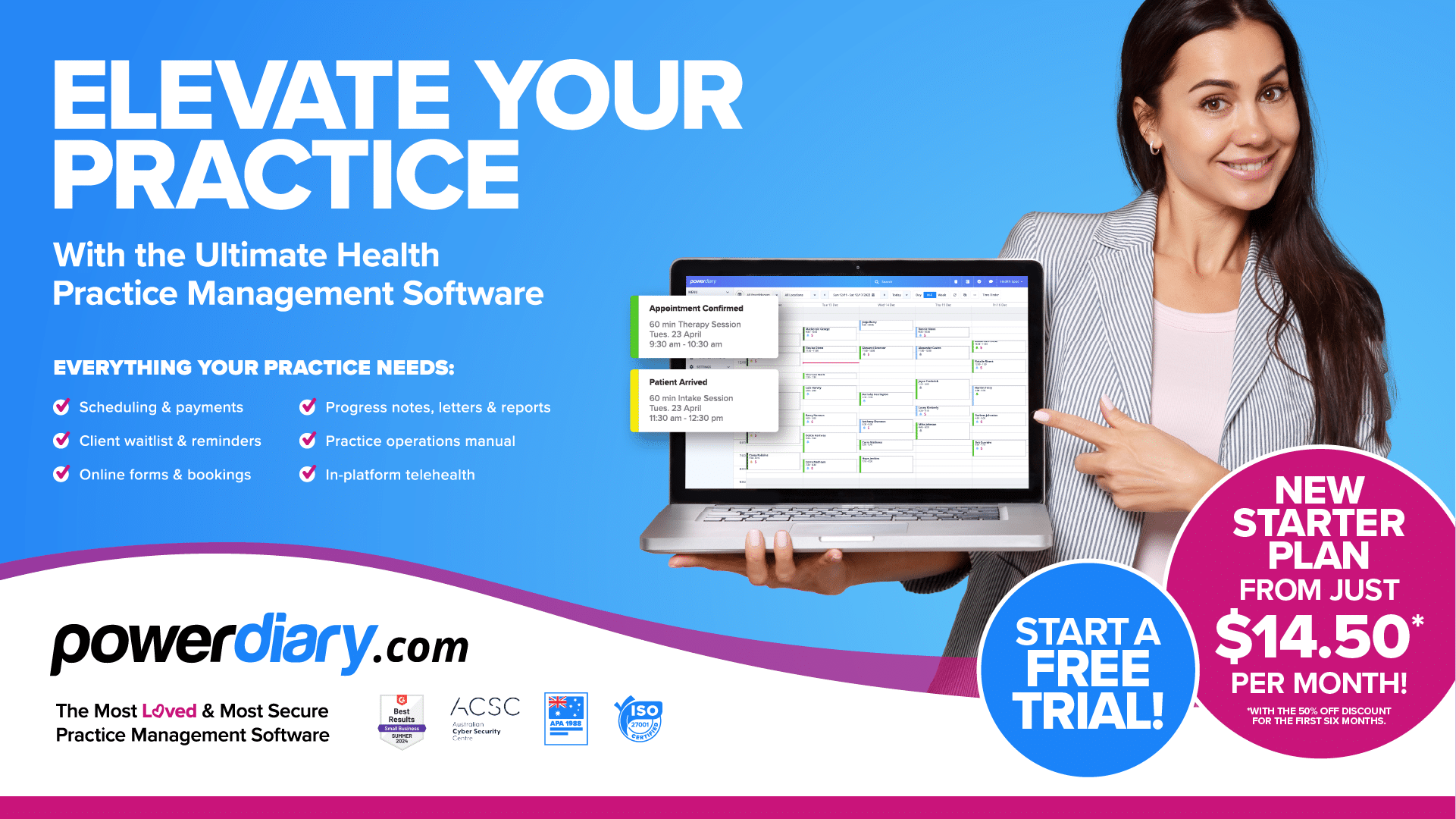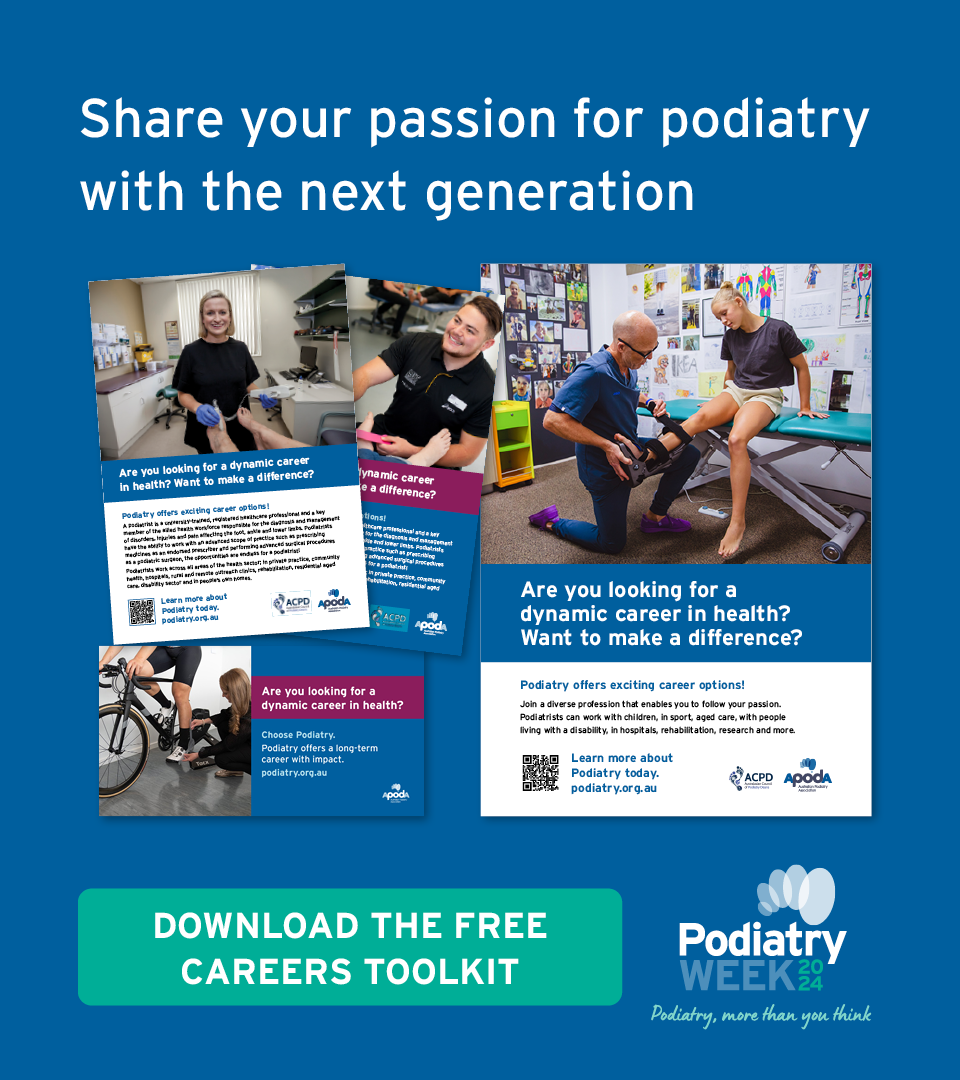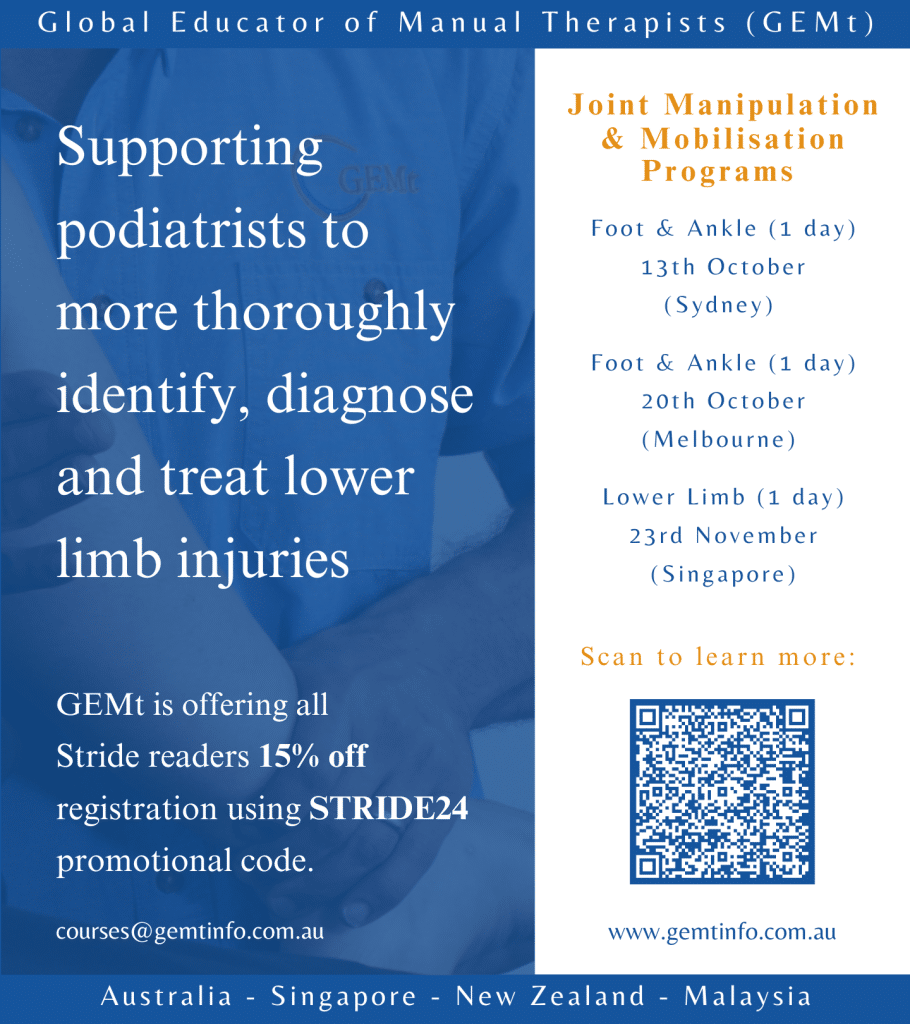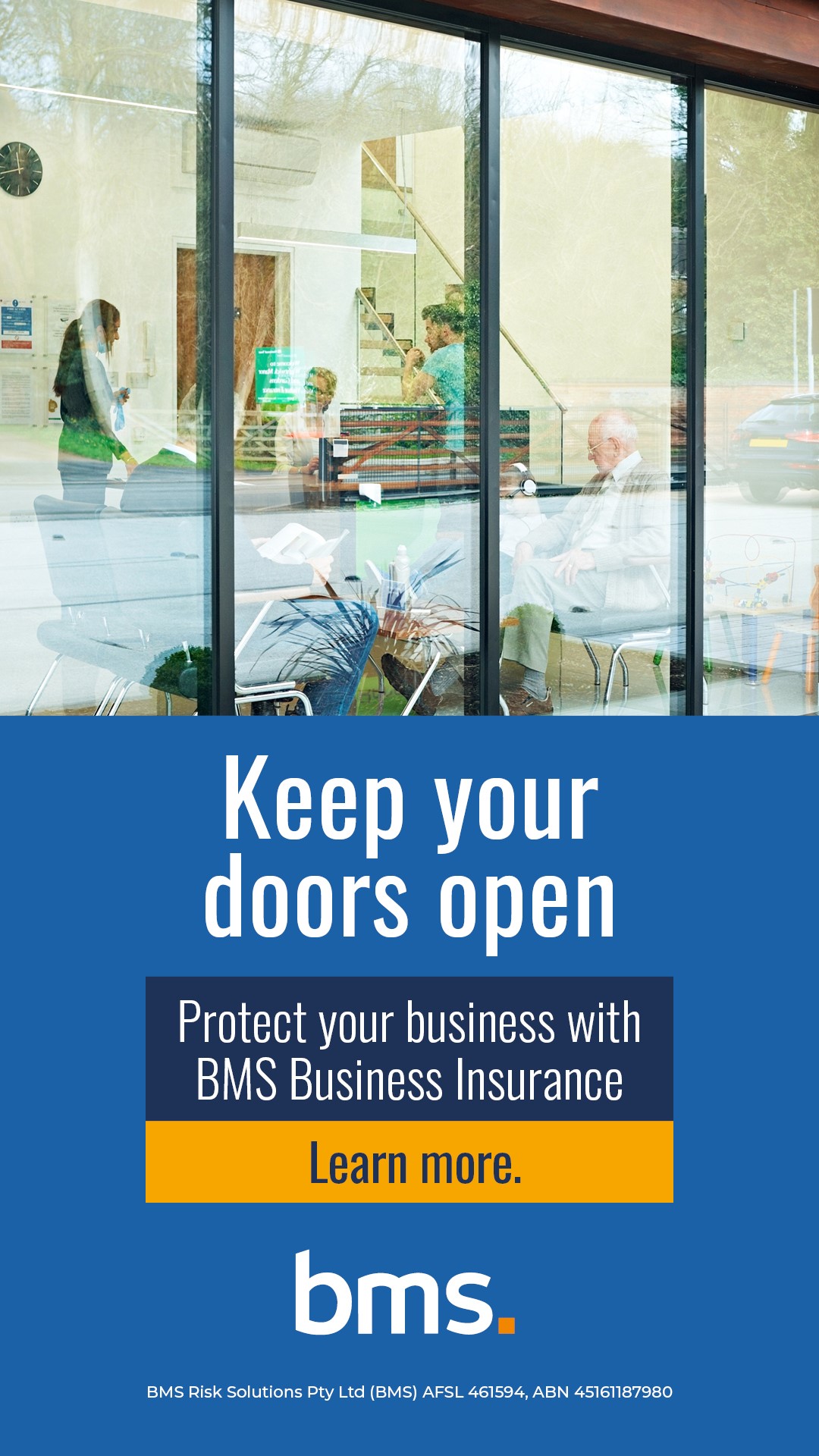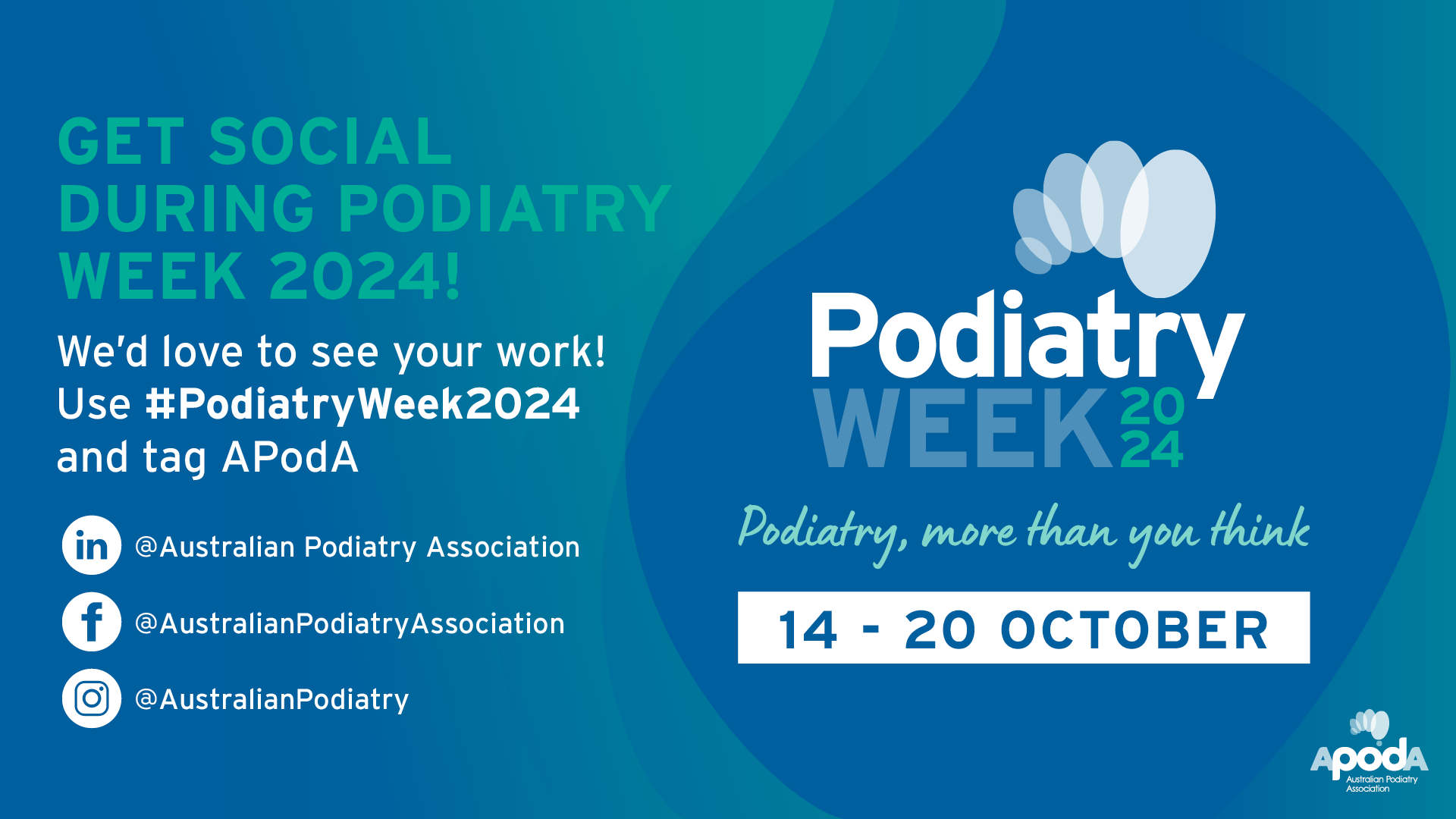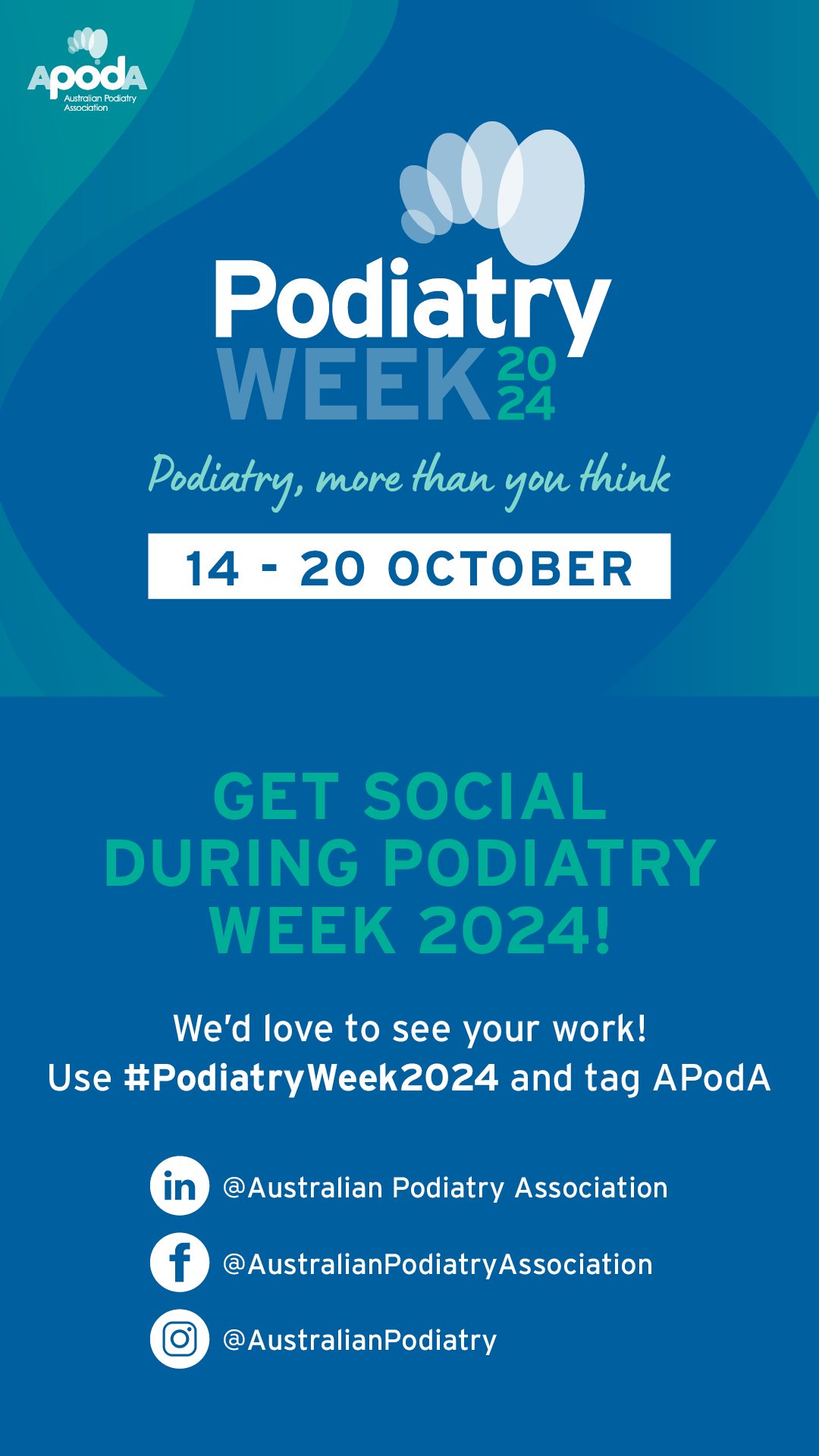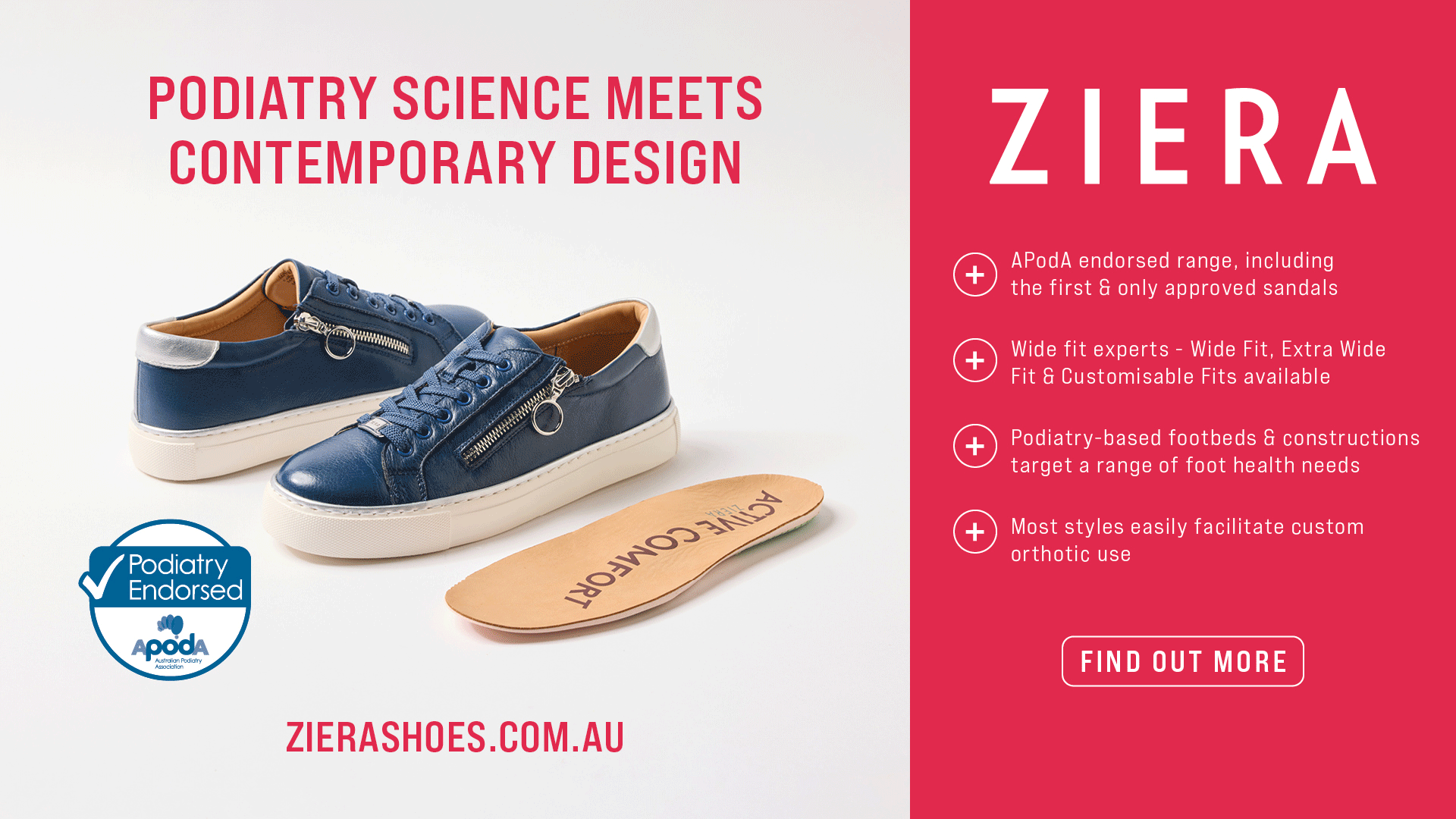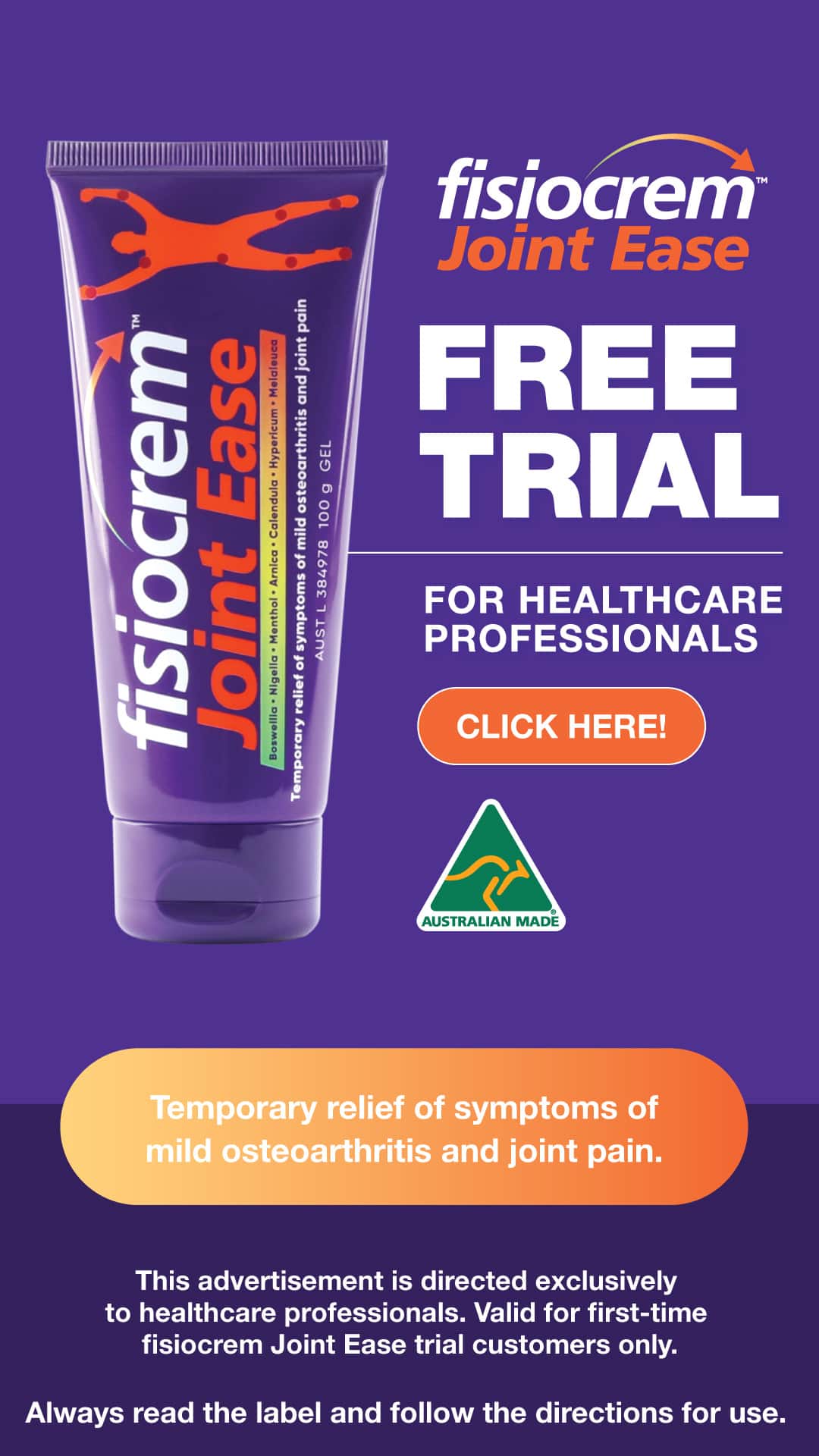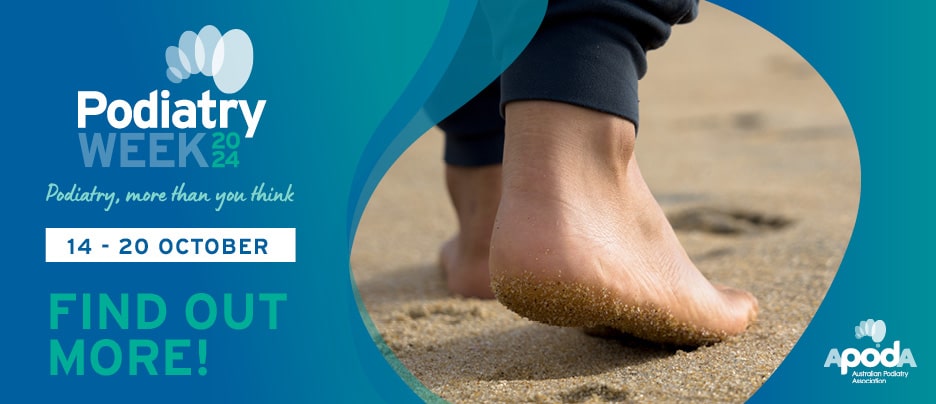
How to get the most out of Podiatry Week
The Australian Podiatry Association is working hard to advocate for the role of podiatrists, especially during Podiatry Week, which runs from 14 to 20 October, 2024. This week is your chance to showcase what podiatrists do, why it matters, and how people can find your services.
Here’s a four-step plan to consider implementing, to put yourself squarely in this picture.
Step #1 Reflect
Think about what metrics matter most to you during Podiatry Week. Do you want more online conversations? More website click-throughs? A great in-person attendance at an event you host? An increase in appointment bookings?
Let these decisions guide your activities as you consider any of the below initiatives.
Step #2 Advocate
This is THE week to advocate for your role and the difference you make – in person and online to your networks, your communities and prospective patients. When else do you have a clear slate once a year to promote your role and the value you add (without it coming across as a thinly-veiled humble brag?!)
Here’s some ideas.
1. Be a thought leader
Own your corner of the podiatry world this week. Share ready-made resources across your social channels and newsletters. Use this opportunity to educate your networks about what podiatrists do and why it’s important.
2. Grow your community
Host an after-work event at your clinic. Entice your local community with snacks or drinks while explaining what a podiatrist does and when they may need to see one. Consider offering a one-week-only discount for bookings using the code ‘podiatryweek.’
3. Go digital
Craft an engaging email newsletter addressing key questions, such as: What does a podiatrist do? Why may someone need to see a podiatrist? What conditions do you treat? Include relevant resources as linked attachments, which are designed for current and potential patients.
4. Hit the streets
If you’re feeling bold, offer a two-minute gait analysis to locals to celebrate Podiatry Week. It’s a fun way to educate the public and start conversations about your services. While no meaningful analysis can probably happen in two minutes, it can spark new conversations and fresh interest!
5. Go long-form
Get busy on LinkedIn and write a longer editorial piece on why you work as a podiatrist. Share what it means to you and what you want people to understand about your profession.
6. Rally the next generation
We want the next generation of podiatrists to get involved—so if you’re a podiatry student, don’t forget to download your badge and share this social media graphic during Podiatry Week (and encourage your university to participate as well).
Step #3 Collaborate
Remember to include the Australian Podiatry Association (APodA) in any of the above activities, to help your message travel faster, and further. Don’t forget to…
- Take photos of your Podiatry Week in-person activities and send them to the APodA via the below channels.
- Facebook: @AustralianPodiatryAssociation
- LinkedIn: @Australian Podiatry Association
- Instagram: @australianpodiatry
- Tag the APodA to maximise your reach! Use #PodiatryWeek2024 to ensure you’re part of the larger conversation online. Let’s spotlight your efforts and celebrate you.
….In the meantime, the APodA will be watching closely to see how many times the above-linked resources are downloaded by you and your networks.
Perhaps even more importantly, the APodA will also measure how many people go to the Find a Podiatrist resource online, given it will be strongly promoted to the public across Podiatry Week.
Step #4 Update
If you are a member of the Australian Podiatry Association, make sure your profile is up to date on Find a Podiatrist, especially since this year’s Podiatry Week campaign is focused on directing plenty of online traffic to this destination. (And if you’re not a member, it’s not too late to join and make the most of this ongoing opportunity and the increased visibility it provides).
AD
A proud STRIDE advertiser
Why ‘Relative Energy Deficiency in Sport’ matters to podiatrists
A podiatrist’s account: working in the NFL

Motivators and barriers to studying podiatry: latest insights
As Podiatry Week arrives, it’s an ideal time to examine the motivations and barriers that influence students’ decisions to pursue a career in podiatry.
A recent paper published in the Journal of Foot and Ankle Research and funded by the Australian Podiatry Education and Research Foundation (APERF) sheds light on these important factors, sharing valuable insights that can help shape the future of the profession.
What is this study about?
The study identifies several key motivators that attract students to the field of podiatry. These motivators reveal not just the interests of prospective students, but also the values they hold dear in their professional journeys.
Who are the authors?
Michelle R. Kaminski, Glen A. Whittaker, Caroline Robinson, Matthew Cotchett, Malia Ho, Shannon E. Munteanu, Mollie Dollinger, Sia Kazantzis, Xia Li, Ryan S. Causby, Mike Frecklington, Steven Walmsley, Vivienne Chuter, Sarah L. Casey, Burke Hugo, Daniel R. Bonanno
Who took part?
Students enrolled in (i) podiatry and (ii) relevant non-podiatry health, sport or science programs at nine Australian and one New Zealand university, were invited to participate in an online survey. First-year podiatry students were also invited to participate in an online workshop. Quantitative data were analysed using descriptive statistics and linear/logistic regression models. Three independent assessors used inductive thematic analysis for the qualitative data.
What were the findings?
Here’s a summary of the findings, with the full study definitely worth reading.
Motivators to studying podiatry
- Interest in a health-related career: Many students are drawn to podiatry due to a genuine interest in health. This inclination often drives them to seek out a profession that allows them to contribute positively to individual and community well-being.
- Desire to make a difference: A significant motivating factor is the aspiration to have a positive impact on people’s health. Many students are looking for fulfilling careers where their work can lead to tangible improvements in the lives of others.
- Opportunity to care for diverse populations: The chance to work with a variety of different age groups and backgrounds appeals to those considering podiatry; to engage with diverse communities.
The following factors were also considered critical in motivating student interest in podiatry.
- Job prospects after graduation: The potential for stable employment post-graduation is a significant draw for many. Knowing that a career in podiatry can lead to job security is an essential consideration for students.
- Ability to work in private practice: For those seeking autonomy, the opportunity to establish a private practice is a key factor. The independence that comes with private practice is often seen as a major benefit.
The study also identifies key influencers in students’ decision-making processes:
- Themselves: Personal passion and interest are crucial in students’ choices. Students often rely on their own convictions and desires when deciding on their careers.
- Parents and family members: Guidance and encouragement from family play a significant role in shaping students’ career paths.
Barriers to studying podiatry
Despite these motivators, the research highlights several barriers that deter potential students from enrolling in podiatry programs. Addressing these issues is crucial for attracting new talent to the field.
- Lack of awareness of the profession: A common barrier is a general lack of awareness about what podiatry involves. Many potential students simply do not have enough information about the profession to consider it as a viable career option.
- Negative stereotypes: Preconceived notions about podiatry can contribute to a lack of interest. Some individuals may view the profession as less prestigious compared to other health careers, which can discourage aspiring students. Challenging these stereotypes is essential to fostering a more accurate understanding of the role podiatrists play in healthcare; which the Australian Podiatry Association seeks to champion during Podiatry Week (14 to 20 October 2024) and beyond.
- Limited understanding of career pathways: The current absence of clear information about the various career options within podiatry can also deter students. Without a solid understanding of what career paths are available, they may be hesitant to commit to a podiatry degree.
- Limited understanding of job prospects: Concerns regarding job availability and career stability weigh heavily on students’ minds. In a competitive job market, doubts about future employment can significantly influence their decision-making process. The irony is that there are plenty of opportunities for podiatrists to explore, particularly given workforce shortages.
Suggested solutions to overcome these barriers
To tackle the barriers identified in the research, several strategies are proposed. These solutions can pave the way for a brighter future for the profession and encourage more students to enter the field.
- Increase awareness: Implement targeted awareness campaigns that educate the public about the importance of podiatry in healthcare. Greater visibility can attract prospective students and inform them about career opportunities.
- Address negative stereotypes: Develop initiatives to counteract negative stereotypes associated with podiatry, emphasising the diverse and impactful nature of the work.
- Promote career pathways: Provide clear information about the various career pathways and job prospects within podiatry to attract potential students. Highlighting success stories can inspire confidence in prospective podiatrists.
- Enhance visibility: Use media, school programs, and community outreach to increase the visibility of podiatry and spark interest among young people. Engaging with schools and communities can create a pipeline of future practitioners.
- Support systems: Establish support systems for students, such as mentorship programs and career counselling, to guide them through their educational journey and into the workforce.
Impact of declining enrolments
The study also addresses the consequences of declining enrolments in podiatry programs, a trend that poses significant challenges for the profession. This decline threatens the sustainability of podiatry and can lead to several issues, which affect both practitioners and patients.
- Workforce shortages: With fewer graduates entering the profession, the potential for a reduced workforce becomes a reality. This shortage could compromise the level of patient care and services available.
- Increased workloads: Existing practitioners may find themselves facing increased workloads as the number of new graduates decreases; something many existing practitioners will already be able to relate to. This situation can lead to burnout and reduced job satisfaction among current podiatrist; as well as impacting patient care.
For further reading, refer to the full study.

Advocacy update
August and September were busy months, not only in the podiatry and wider allied health landscape, but also in the broader policy environment. Here’s a wrap-up of what happened.
#1 National Disability Insurance Scheme Amendment is passed
Of important mention is the passing of the National Disability Insurance Scheme (NDIS) Amendment (Getting the NDIS Back on Track No 1) Bill 2024. The impact of this Bill and its proposed changes will be a continued focus for the Australian Podiatry Association (APodA), and we will work with the NDIS, Allied Health Professions Australia (AHPA), and our members to communicate and advocate for its operational implementation.
#2 New Aged Care Bill introduced and open consultation underway
September saw the introduction of another important Bill, the Aged Care Bill 2024. This new Act seeks to create a simple, single-entry point to make access to the aged care system for older people easier, including a fair, culturally safe single assessment process.
There remain several grey areas, and the implications for podiatrists who provide residential aged care services or in-home services won’t be known until the Bill is passed and the nitty-gritty is put into words.
There is now an open consultation in response to this Bill’s submission to Parliament. This consultation has been raised with the PAC SIG committee for active discussion at the upcoming PAC meeting. The value and significance of the APodA’s Special Interest Groups are vital when approaching policy and advocacy topics. We expect their continued involvement will enhance the profession’s voice.
#3 Workshop attendances underway
The APodA has been invited to participate in a number of workshops to complement this busy time. One of vital importance is pain and establishing a set of Australian Standards. The APodA represented the profession and, through vigorous discussions, we feel we put our best foot forward (pun always intentional…).
#4 Scope of Practice report nearly finalised
September also saw the next, and possibly final, stage of the Scope of Practice report consultation.
Following the intensive consultations process, of which a number of podiatrists represented the APodA, focus was highlighted in several areas. Some of these include:
- Exploring the existing legislation and regulation of the Drugs and Poisons act and how the current separate state and territory regulations are a barrier to podiatrists.
- Reviewing recommended new models of care that work towards an efficient and effective way to support how Australian’s access care.
- Leveraging off current practices of professions, such as allied health, to more efficiently refer to other healthcare professions.
This draft report still needs to finalise its recommendations and go to Parliament for discussion. It’s a long road yet, but it is pleasing to see some progress being made.
Additional focus areas
- AHPA Project – Draft Models of Care summary paper
- Home Care Package and pressure from service co-ordinators – continued discussions exploring the current impacts and pressures within the aged care environment
- APodA’s Allied Health Assistants Working Group – continuing discussions
- APodA’s Digital Health Working Group – continuing discussions.
Meetings, workshops and targeted webinars that the APodA has been involved in
- August – Australian Digital Health Agency – Allied Health Connections (Industry offer)
- August – Australian Digital Health Agency Update Webinar
- September – Cemplicity – 2023/2024 Pilot discussion
- September – Dementia Australia – workshop (postponed)
- September – AHPA’s Election planning meeting
- September – Medical Devices – Essential Principles for Safety and Performance – Part 2: Proposed alignment with the European Regulations
- September – Scope of Practice Review Webinar – Draft Final Report
- September – AHPA Disability Working Group
- September – AHPA Digital Health Working Group
- September – AHPA Primary Care Working Group
- September – AHPA Aged Care Working Group
- September – CAHA Members Webinar: National Health and Climate Strategy update and scorecard
- September – NDIS Compliance meeting
What’s next?
- Advocacy for Musculoskeletal Health
Laura Khuu, an APodA member, recently attended a forum in Canberra on behalf of the APodA, organised by Arthritis Australia. This forum advocated for better, earlier, and more affordable care for Australians who live with musculoskeletal conditions. Arthritis Australia will deliver a position statement shortly, stay tuned.
- Research and Vascular Assessments
The APodA continues to push for improvements in patient care, recently emphasising the need for funding for vascular assessments in the Scope of Practice Review consultation. This funding is critical to ensure podiatrists can provide comprehensive care. We remain committed to exploring further research and funding opportunities to strengthen services for both patients and podiatrists.
- 2025 pre-Budget Strategy
As part of our pre-Budget strategy for 2025, the APodA will collaborate with internal (SIG committees) and external stakeholders to develop a robust set of recommendations in response to the Federal Budget. This is a pivotal opportunity to ensure our voice is heard.
- Upcoming Events
- End of Year National Advocacy Advisory Committee (NAAC) Meeting – A key meeting to review the past 12 months and look towards 2025.
- AHPA Symposium – A policy forum in which the APodA will connect with other peak bodies to explore collective strategies for the future health landscape.
- Health Partners Provider Forum (DVA) – This forum, held in Canberra in November, will focus on working with the Department of Veterans’ Affairs (DVA).
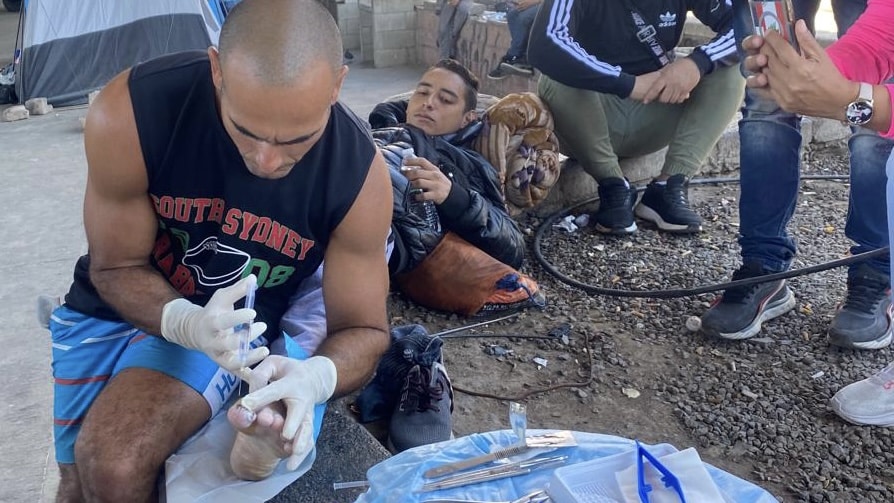
The Travelling Pod | Treating partial nail avulsion
Podiatrist David Karamanis (AKA ‘The Travelling Pod’) shares his experiences treating travelling migrants in Mexico; explaining how he treats the partial nail avulsion without Phenol.
Here at the Vias in Irapuato Mexico, I have commonly treated people’s complaints of ingrown nails quite easily without any local anesthetic needed. However, there have been a few significant cases that have needed a partial nail avulsion (PNA) without Phenol.
The migrant journey (from South America) is very taxing on their body; from the Darien Gap jungle that includes days of river crossings through the Panama jungle, to days of walking in Guatemala and Mexico.
Patient conditions
To set some context upfront, the train cargo is different around Mexico. For example, in Irapuato it is often dirty coal. The migrants climb onto the train and sit in this coal for up to 22 hours before arriving at their next destination and repeating the process until they reach the border of Mexico. This means they are exposed to all types of weather and germs through their journey.
Therefore, I have to educate them on the signs and symptoms of infection and the ability to clean and maintain the wound from the procedure. I always provide patients with a ‘goodie bag’, with items like Betadine, gauze, tape for redressing, and gloves to cover their foot from their showers. Often, I need to use a translator to explain to the patient and one other family/ friend all the important details of redressing, avoiding moisture, signs of infection, and avoiding walking barefoot and trauma.
The perfect storm
I have never suffered from ingrown nail pain. However, when I did the migrant journey in the Darien Gap, I suffered from ingrown nail pain with redness and puss. This was no surprise, given the combination of the significant water exposure alongside the friction of the shoe which is influenced by our biomechanics. I never treated my ingrown nail infection by removing the nail because I knew the direct cause.
When I see infected ingrown nails, I understand how it can start, but I treat a PNA without Phenol because of its persistent nature. In a lot of cases, the ingrown nail signs and symptoms start in the jungle and persist until I see them two to three weeks later at the Vias.
Why I don’t use Phenol in the PNA procedure
There are many reasons why I would not use Phenol in the PNA procedure here at the Vias. Phenol as we know is effective but more invasive with a longer healing time. Also, the inability to safely store the Phenol, and the difficulty of educating the other workers about its toxicity, are two other contributing factors.
The patients I help, in using a PNA procedure can leave on the train at any moment. So, I have to communicate that once I start the procedure, I cannot stop even if the train were to arrive. Often, the next day I return to see that the patient has left on the train overnight.
Working conditions
A PNA procedure on the street at the Vias is very different from the clinic where I was working in Australia. The environment is a lot less clean, and it can be very different in general. There has only been one time working on the street where I did not feel safe because there was a man who was clearly on a substance and was showing signs of aggression. There have been other times when curious people, kids, and even street dogs come to watch my procedures. Commonly, I have had to move kids away because their eagerness to see is too close to my sharps for both our safety. Also, I am used to having half my attention on the procedure and the other half on my surroundings, with kids walking past or playing with balls nearby.
I have tried to pick the best location to do the procedure but it is hard to escape the hazards when you are doing the PNA procedure amongst people living on the streets. However, the benefit for the patient outweighs the risks.
To minimise the risk, on most occasions, I have had a helper who I know can be another set of eyes around me but also involved in the procedure.
Wind has uncommonly interrupted my previous procedures, causing dirt to blow into my clean area and equipment. This can be easily avoided working in the medical clinic at the Vias, however, it was not always appropriately maintained and it is used as a storage unit and shared with the doctor. Also, podiatry is not a familiar profession in the migrants’ home towns, and so they feel more comfortable with family and friends looking on during the PNA. Lastly, our feet are commonly seen as an unclean area and even more so when the patient is living on the streets and often walks around barefoot.
Sterilising process and equipment
One of the common questions I get asked is in regards to how I sterilise my instruments. I clean my instruments with ‘Clorox’, which is a bleach. The active ingredient, sodium hypochlorite, kills bacteria and viruses. Clorox is easily accessible and cheap, and so I clean my instruments using a scrubbing brush and then I do a second clean using alcohol and a baby’s wet wipe, and then I soak them in Clorox.
I have two general treatment packs with spare clippers stored away; one small tipped clipper and one heavy-duty clipper. When I first started in Bolivia, finding appropriate equipment was extremely hard. However, with the help of Sydney City Podiatry and Mona from Club Warehouse in Sydney Australia, I have received better quality equipment for better service. Thank you to these sources of support, which makes my work in Mexico so much more effective.
Follow The Travelling Pod
YouTube: The Travelling Pod
Instagram: www.instagram.com/the_traveling_pod/
Website: www.TheTravelingPod.com

How effective is your marketing?

Marketing manager, Lachlan Hetherington, shares his thoughts on how to unlock more profits in your podiatry practice.
Imagine discovering untapped profits within your practice that you may not currently be capturing? And what if I told you that unlocking this potential would not only increase profits but also improve patient care?
Ready to transform your practice? Let’s dive into strategies that will boost your income while enhancing patient care.
The business case for marketing
When podiatry practices think in terms of growing, the first thing that may come to mind is marketing. If this applies to you, then you’re not entirely wrong. It can be tempting for a practice to focus solely on bringing in new patients, yet this risks missing the bigger picture.
Did you know it’s five times more expensive to market to new patients than it is to retain your existing ones? Whether it’s through Facebook ads, Google ads, SEO, or paying marketing agencies; the costs can skyrocket. While these tactics can be effective, they should never be your first port of call.
Fix the leaky bucket: reactivate your existing patient base
Before you start pouring money into external marketing, it’s vital to ensure you maximise your current patient base. Fix the leaky bucket first, then focus on attracting new patients.
1. Fortnightly newsletters
Regular communication with your patients is key. Fortnightly newsletters not only keeps your practice front-of-mind, but they also provide an opportunity to educate and offer value to your patients. You could include foot care tips, updates on new treatments, or special offers to incentivise them to book their next appointment. Consistent engagement leads to higher retention rates, and re-engaging inactive patients is far more cost effective than acquiring new ones.
2. The power of SMS
SMS is a simple, yet often underutilised, tool for boosting patient retention. If you don’t do this already, send appointment reminders or follow-up messages to check how your patients are doing after their last visit. You can also use SMS to notify patients of special offers or encourage them to book a check-up.
3. Promotions
Offering exclusive promotions to your existing patients can go a long way to reactivate those who may have drifted away. A good example of this is a back-to-school campaign. Consider seasonal discounts, package deals for ongoing treatment, or even a ‘refer a friend’ incentive to get them back through the door. Special offers not only drive revenue but also strengthen the relationship between you and your patients.
Now you can market externally
Once you’ve re-engaged your current patient base, your practice will be in a much stronger position to explore other marketing channels. Now, when you invest in external marketing like Facebook ads or SEO, the value of each new patient increases significantly. And they are more likely to become long-term clients.
Once your internal processes are optimised, it’s time to look at external marketing to expand your patient base. In addition to ensuring your details are updated on Find a Podiatrist, here are a few effective strategies:
- Optimise your website with relevant keywords like ‘custom orthotics in [your city]’ or ‘best podiatrist near me’, to ensure potential patients can find you easily online.
- Running Google Ads that target high-intent keywords can be an efficient way to bring in new patients.
- Use Facebook Ads to reach specific demographics, such as local athletes, seniors, or those needing custom orthotics.
Unlock the hidden potential
By shifting your focus from solely acquiring new patients to optimising your current patient base, your practice can unlock hidden profits and provide better care. With strategies like fortnightly newsletters, SMS check-ins, and special offers, you can retain and reactivate your existing patients more effectively.
Once you’ve sealed the leaks in your practice, you’ll be ready to amplify your growth with external marketing services like SEO, Google Ads, and Facebook Ads. This combination of internal retention and external acquisition will ensure you’re not only growing, but doing so in a sustainable, profitable way.
AD
A proud STRIDE advertiser

Tips for effective communication in podiatry
In this article, Scott Shelly and Ashlee Sherman of law firm, Barry Nilsson, discuss a clinical scenario where a podiatrist did not effectively communicate with a patient; providing some safeguards to help prevent this. The Australian Podiatry Association’s insurance partner, BMS, explains how to respond in the event of a similar claim.
As podiatrists know, the shared Code of Conduct (Code) sets out a podiatrist’s professional obligations to engage in, and maintain, effective communication with patients and other treating practitioners.
These obligations aim to promote good communication between a podiatrist and patient to ensure that a patient is fully informed and understands all aspects of treatment to enable patients to appropriately participate in their care.
The remainder of this article is only available for members. Please read on here.




